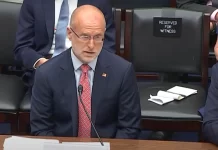Economy slows as interest rates, home prices, and unemployment put the brakes on, says Robert Genetski.
The Week That Was
The July Homebuilders’ survey plummeted 12 points to 55. Soaring home prices and higher interest rates have greatly slowed the market for new homes.
Although July new housing activity still was increasing, the rapid pace of deterioration is consistent with an economy heading the wrong way.
Mid-July saw a continued gradual increase in initial weekly unemployment claims. Initial unemployment claims for the past two weeks averaged close to 250,000. This is 75,000 above the low in March. Also, the number of workers receiving insured unemployment payments began to move slightly higher. The tight labor market is easing.
Things to Come
Later this morning the July advanced Markit survey for business activity will be released. This is the first overall business survey for July. The June survey showed significant economic weakness and was at odds with the more popular ISM survey. July surveys should help resolve the issue of how weak the economy has become.
On Wednesday June new orders for durable goods should shed some light on the extent to which businesses are responding to recession expectations. So far, new orders for durable goods orders had been holding up well through May.
Also on Wednesday, the Fed is likely to confirm raising their target fed funds range to 2¼% – 2½%. Although these rates remain well below the rate of inflation and the rate of current dollar spending, the potential for subsequent increases have led businesses to cut spending.
On Thursday, the first estimate of second quarter GDP is likely to show current dollar spending slowing to the 7% – 8% vicinity, with real growth close to zero. If so, it would place the year-over-year change in spending at 9%. While still too high to contain inflation, a 9% increase would be down from12% in the year ending in the fourth quarter. If the down trend in spending continues, inflation rates should moderate.
Friday’s report on June personal incomes and spending will provide the most comprehensive guide to the economy heading into the third quarter. In spite of businesses announcing cutbacks, incomes and spending are likely to continue to increase in the 7% vicinity.
Market Forces
The highly erratic stock market followed last week’s declines with this week’s sharp increases. The Nasdaq and small cap stocks rose 7% to 8%, while the Dow and S&P500 rose 5%.
Technical indicators improved as all indexes broke through key resistance. However, the gains are still coming on low volume, a cautionary sign.
Businesses everywhere are preparing for history’s most anticipated recession. A weakening in demand has oil prices and interest rates falling. If the lack of demand continues, inflationary pressures will ease, helping the transition to a more stable environment.
Recessions often occur once short-term rates move above longer-term rates. For a while at least, the fed funds rate will likely remain below longer- term rates. Financial markets are anticipating the spread between fed funds rate and longer-term rates could soon be gone, with both in the vicinity of 3%.
Stock investors may be picturing a flat yield curve with the fed funds rate close to longer-term rates. This would imply a modest tightening in monetary policy instead of the more usual overly restrictive policy.
There is still the problem of excessive government spending and regulations restricting growth. So, even if the Fed were to get monetary policy right (which is unlikely), the economy would still struggle to grow.
We anticipate a rough road ahead, but if the Fed is able to convince markets it is regaining control of spending and inflation, the outlook could be only a modest downturn. This is the good news stock investors may be looking at. While I believe they’re wrong, I’m adding modestly to my stock portfolio on the chance they’re correct.
Outlook
Economic Fundamentals: weak
Stock Valuation: S&P 500 overvalued by 29 percent
Monetary Policy: restrictive
For more from Robert Genetski.
More on inflation and unemployment.
For more Budget & Tax News articles.
For more from The Heartland Institute.











[…] post Economy Slows as Interest Rates, Home Prices Rise (Commentary) appeared first on Heartland Daily […]